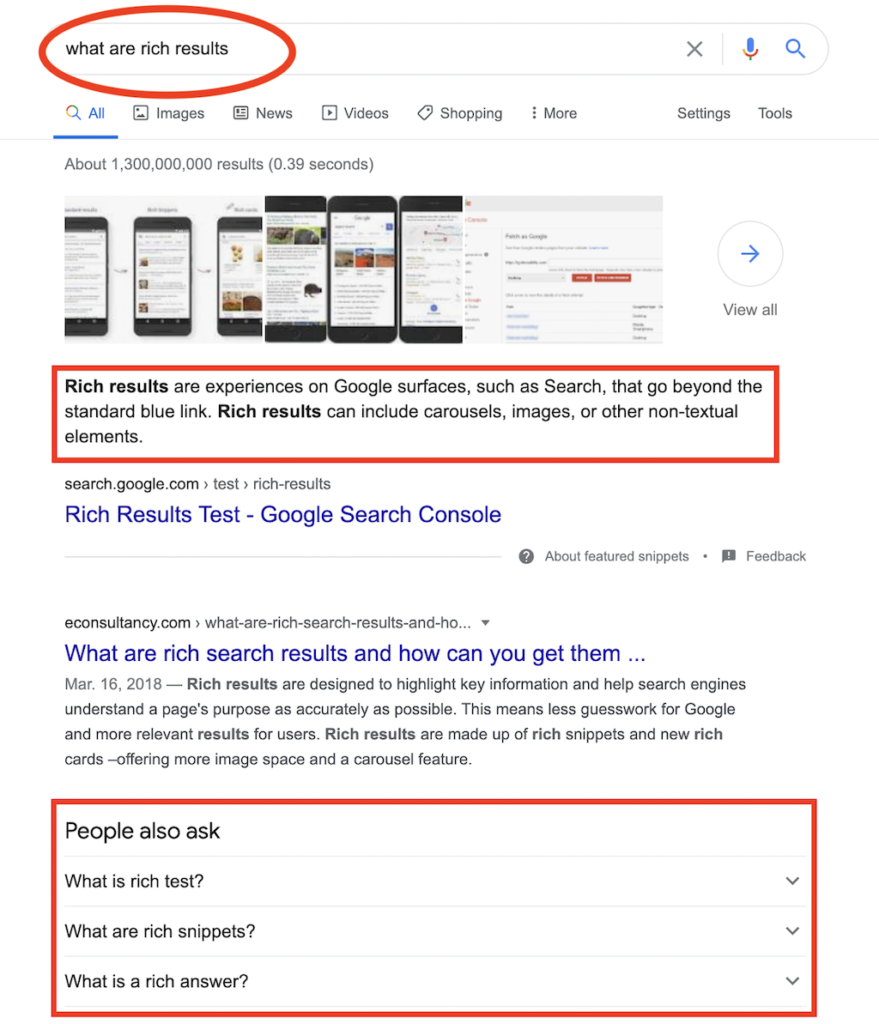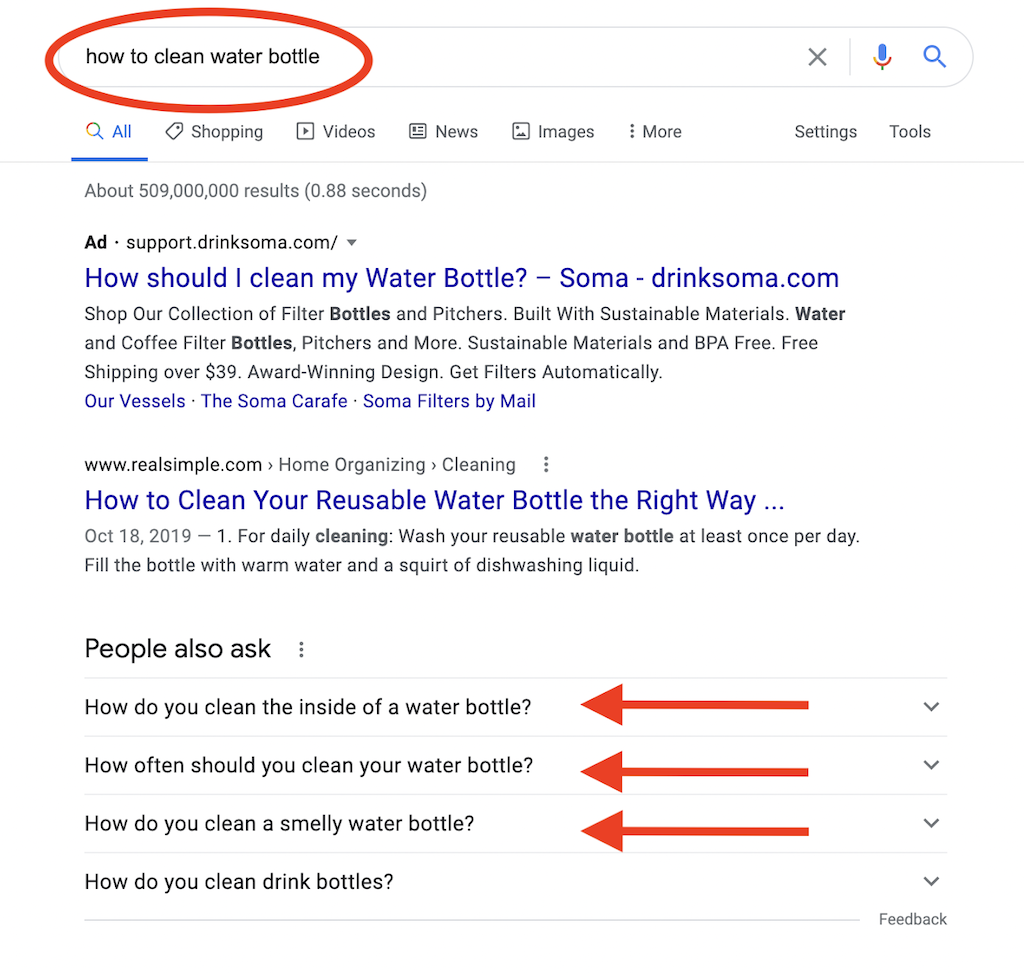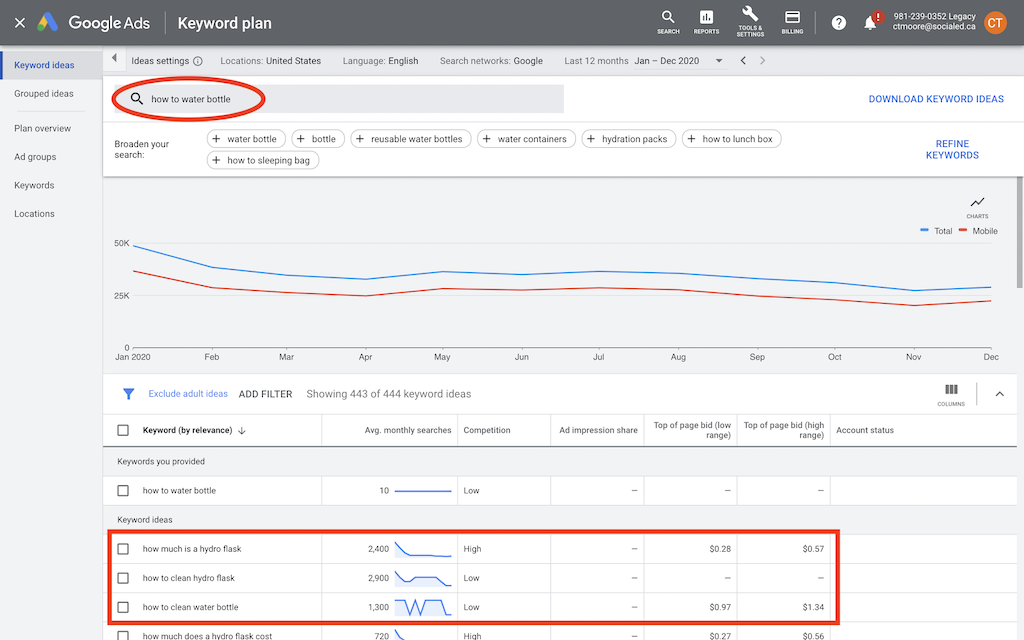Search is the most targeted source of traffic online because it comprises users who are actively looking for what you’re trying to sell them. Full stop.
Think of it this way. Channels such as email, social media, and retargeting lets you target users in the right place (through demographics, past behaviour, etc.), but search allows you to target users also at the right time (through the intent of your very specific search queries), when they’re actively making a purchasing decision. To that effect, search users are already one step down the conversion funnel.
That being said, there are two ways to tap into this ridiculously qualified traffic source. First, there’s SEM (or paid search), where you can bid on keywords and (almost) immediately display your ads to search users, but only at the cost of paying for each and every click those ads generate. Then there’s SEO (or organic search) where your content ranks organically according to a number search engine ranking factors, allowing you to build search real estate equity and achieve a diminishing cost-per-click (CPC) over time.
Table of contents
SEO growth hacking
While SEO tends to be more of a medium- to long-term play because it takes time to accrue relevance and build rankings, there are some strategies that can yield results sooner rather than later. But what those strategies are tends to vary across industries and market conditions – e.g. the degree competition, current competitor practices, user search behaviour, etc.

credit: Abdul Zreika
For instance, if your competitors are heavily invested in SEO, there may be fewer viable SEO growth hacks available to you simply because the competition is leveraging such a diverse range of SEO tactics, that there are fewer untapped SEO opportunities to capitalize on. Conversely, if you’re a startup that offers some completely new and ‘revolutionary’ product/service, and don’t have any competition (yet), you face an added challenge that users are not yet searching for what you sell because they don’t yet know that it exists.
The point is that SEO growth hacking comes down to (1) determining what SEO gaps that exist vis-a-vis the competition, (2) identifying what additional untapped SEO opportunities exist in the market, and (3) adopting a strategy that addresses both simultaneously. In other words, it’s not just about catching up in the rankings, but outgrowing them altogether.
FAQs as an SEO growth hack
Of all the SEO ranking factors, none is as crucial as content. It’s content, after all, that contains keywords, and it’s content that addresses users’ search needs. Indeed, when it comes to SEO, your brand’s content is its basic infrastructure. Without content, there will be no rankings to speak of.

credit: Jac Alexandru
Of course, content comes in all shapes and sizes, and not all content is created equal. Some forms of content are just inherently better suited to supporting SEO goals than others. In fact, if I wanted to coin some lame take on a tired, old expression, I might say something like “content might be king, but there is more than one kind of kingdom.”
In terms of content that supports competitive search rankings, perhaps none is as overlooked and underrated as FAQ content. Not only do FAQs tend to contain keywords and directly address users’ needs, but they also build equity by creating value at the top-of-funnel where a user’s search journey begins.
FAQs target keywords through semantic search
FAQ content is an important SEO asset not only because it tends to contain relevant keywords that you should be ranking on, but also because of how it targets those keywords. Specifically, those keywords exist in a semantic query, meaning that your FAQ content both targets keywords and optimizes them for semantic search.
What exactly is semantic search, you ask? Simply put:
Semantic search is defined as a search technique which takes into account the meanings of words and the searcher’s intent, looking beyond the exact word for word match of the search query.
Semantic search works at contextual and conceptual level, allowing you to search for “meanings”, rather than simple “words”.
In other words, FAQ content allows you to contextualize the meaning of the keywords you’re targeting. This, in turn, helps Google (and other search engines) correlate your content with user intent, improving its reach and visibility with targeted users.
FAQs are optimized for voice search
Semantic search optimization also extends beyond conventional SEO into voice search optimization. After all, voice search users dictate semantic strings of keywords to their device, so featuring some approximation of those strings in FAQ format significantly increases your chances of ranking in the voice SERPs. Indeed, not only is “[u]sing natural language with direct answers to specific questions” critical for voice search optimization, but approximately “75% of search results will rank in the top 3 positions for a particular question on a desktop search.

credit: Sebastian Scholz (Nuki)
And the size of the voice search market cannot be underestimated. For instance, as early as 2018, Google reported that 27% of the online global population was using voice search on mobile. And other reports estimated that in 2020:
111.8 million people in the US [used] voice search features – a 9.5 percent increase from the previous year.
[…]
And all signs point to it growing in popularity with an expected 9.7 percent increase to 122.7 million users by 2021.
So by leveraging keyword targeted FAQ content, you can not only tap into a significant (and growing) share of the search market, but you can potentially catapult your content into a Top 3 ranking position. In this regard, FAQ content represents an SEO growth hack opportunity that can simply not be overlooked.
FAQs get more SERP real estate and higher CTRs
In addition to the keyword ranking hack potential of semantic search and voice search optimization, FAQ content can also increase your CTR from the organic SERPs. Essentially, being an instance of semantic content, FAQ content is eligible for Rich Results.
What exactly are rich results, you ask? Simply put, rich results are those really neat search results that feature value-added content in the SERPs. Common examples include user-ratings or thumbnail images of products or recipes that appear right in the SERPs. Or as Google puts it:
Rich results are experiences on Google surfaces, such as Search, that go beyond the standard blue link. Rich results can include carousels, images, or other non-textual elements.
The point is that rich results (1) make your content stand-out in the SERPs, and (2) position it in the Top 3-5 results. And FAQ content is particularly effective at being included in rich results.

Rich results can include carousels, images, or other non-textual elements.
Of course, standing out from the crowd isn’t always a good thing. And just as standing out might get you ostracized in high-school, it would be fair to wonder whether having your site’s content featured right in the SERPs would prevent users from clicking through to your site.
But the data foretells a very different outcome. Indeed, “[s]tudies show that having a rich snippet can increase click-through rates (CTR) by 677% and drive 20-40% more traffic than product links without them.” So, the real question for marketers becomes whether your brand can really afford to pass-up on the opportunity that FAQ rich snippets offer your brand in terms of voice search and rich results rankings.
How to rank with FAQ content
So FAQ content (1) targets keywords through semantic search, (2) is optimized for voice search, and (3) increases your visibility in and CTR from the SERPs. That much is clear, and backed by both data and documentation.
But is hacking your rankings really as simple as creating an FAQ page? Well, no, of course it’s not. Most things worth doing aren’t all that simple or straightforward. But that doesn’t mean that they have to be rocket surgery, either. In fact, with a bit of research, planning, and finesse, you can optimize just about any kind of page with FAQ content.
FAQ Content Mapping
As SEO assets, FAQ pages are fine enough, I guess. After all, they (1) do target keywords through semantic search, (2) are optimized for voice search, and (3) capture some of that rich results real estate in the SERPs that users like clicking on so much.
But as conversion assets go, they kinda fall short. I mean, through their answers, they might allude to a product’s or service’s value-prop, but they’re certainly not the place to hard sell it, and they’re not an appropriate place for a call-to-action (CTA) either. Indeed, doing so would be grounds for users to question its validity – discrediting it entirely, and precluding it from establishing precisely the kind of trust with users that it’s intended to.
That isn’t to say, however, that FAQ content can’t be featured alongside middle- or bottom-of-funnel content that’s intended to convert. And when it is, that conversion-focused content starts to rank on shorter-tail, higher-volume keywords, bringing in significantly more traffic, and helping you segment your conversion funnel.
Essentially, just about any page (at any level of the funnel) can be optimized for semantic search, voice search, and rich results by adding relevant FAQs. And this content can even be placed down below the fold, where they’re not interfering with the user experience or journey.
Rather, the FAQ content is there mostly for search engines (as well as any users who might still have questions after reading the in-depth service descriptions), and will help these pages rank when users ask Google, Siri, or Alexa questions related to those services. And the same can be done easily enough in an ecommerce setting, on product pages, and product archives.
Asking the right questions
Of course, if you want to rank your pages using FAQ content, you can’t just answer questions specific to your products or services. You also have to answer the questions that users are actually asking search engines and voice assistants. And there are two general ways you can do that.

credit: A-Z Quotes
1. Mining the SERPs
The first place you can look to determine what FAQs users are asking is in the organic SERPs themselves. Conducting rudimentary “what is” or “how to” search related to your products or services will help you start scoping out what kinds of FAQs are already ranking in the rich results.

From there, you can segment relevant FAQs into groups or verticals, and begin to extrapolate additional related questions that are being searched. And now, it’s just a question of repurposing those questions, and making them your own.

2. Mining SEM data
Of course, mining the SERPs for FAQ ideas tells you nothing about how frequently different FAQs are searched, meaning you can end up missing out on critically high-volume FAQs just because you were limited by either your imagination or experience. This is where you’ll want to use PPC data to identify highest value content opportunities.
Essentially, you can advertise on Google, YouTube, Bing, or Amazon by bidding on keywords. To help you choose what keywords to bid on and how to spend your budget, these platforms let you look up the search volume and the average CPC (cost-per-click) of different related keyword combinations.
The higher the search volume, the higher the traffic potential. The higher the CPC, the higher the value of that traffic is – presumably because other advertisers are willing to bid more on it for a reason.

The point is that you can use this insight to find high-volume FAQs related to your products/services, and then add variations of them across relevant pages. There’s even a number of reliable keyword research tools out there (free and paid) that can simplify the process for you by helping you pull that data in on the fly without having to login into those platforms.
Structured data markup
Finally, just because you ask & answer all the right questions, doesn’t necessarily mean you’ll get that coveted rich results real estate in the SERP. After all, Q&A content comes in many forms, such ad copy and rhetorical questions. So you have to make it clear to search engines where your FAQ content is, and what it’s all about.
This is where structured data comes in. Structured data is essentially a way of tagging content on a page in a way that categorizes it. For instance, a paragraph on a page can be a lot of different things (a product description, a user review, part of a blog post, etc.), and search engines can’t always determine what that thing is, so they don’t always know to display those pages in relevant SERPs.
By marking up your Q&A content with the FAQ Page Schema, however, you can categorize it as FAQ content. So when search engine crawlers index it, they’ll know that your content is particularly relevant to related Q&A searches, and it will be more likely to display it in the rich results.
That being said, structured data should also play a role in the other content alongside the FAQ content. Some of the most common schemas include, but aren’t limited to:
- Product Schema for marking up product archives + product pages
- Service Schema for marking up service pages
- Software Application Schema for app/software archives + download pages
- Review Schema for any user reviews or testimonials that appear on the page
Furthermore, by implementing structured data markup on your FAQs and adjacent content, you’re not just contextualizing that content for semantic search, but you’re also creating the kind of multi-faceted, value-added content that Google (and other search engines) tend to favour in their rankings. After all, search engines want to show their users the most relevant results, and a page that features relevant and multifaceted content is much more likely to have the information that users are looking for than one that doesn’t.
There are no stoopid questions
Investing in search engine optimization can help you tap into some of the most targeted traffic online and achieve a diminishing cost-per-click over time, but it also tends to be a medium- to long-term play because it takes time to establish trust, authority, and relevance with search engine algorithms. That being said some tactics can yield results sooner rather than later, and FAQ content is one of those.
Essentially, FAQ content allows you to close existing SEO gaps between you and the competition by (1) bolstering your pages’ keyword relevance with (2) semantically optimized content that can (3) capture valuable rich results real estate in the SERPs. In a word, simple FAQ content is nothing short of an SEO growth hack which goes to show that the only stupid questions are the ones we don’t ask.
